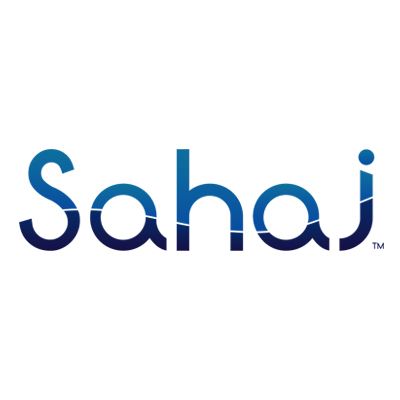
Sahaj
View Brand PublisherWe ‘create magic’ for clients with our lean and unconventional model, say Sahaj founders
In early 2014, the startup ecosystem in Bengaluru was buzzing. Four friends, who were part of the senior management at their organisations, wanted to be a part of this exciting new wave.
Sunder Malyandi, Akash Agarwal, Rohit Bansal and Nitin Dhall, the co-founders of Sahaj, were mulling over their next move at a coffee shop in the city’s startup hub Koramangala, where they ran into former colleague Sharath Battaje. “I was surprised to see them all there at that time of the morning. They told me they were quitting their jobs and were figuring out what to do next. That day, I reached office by 10.30 am and by 11 am, I called back to tell them that I had resigned, and was ready to join whatever they were going to do next. It was that simple,” says Sharath, a Solutions Consultant at Sahaj.
And simplicity is the theme that defines how the team at Sahaj approaches all aspects of their work.
“When we started, we were all leading a direction of growth, and were excited about starting something new. We really wanted the satisfaction of solving something differently or solving something that was perceived to be fairly complex in a simple and direct way. That became the foundation of our business, and Sahaj was born as a consulting and services firm,” says Sunder.

The next step was finding people who wanted to create solutions to problems where both the risk and impact were high. Their aim was to find people with a deep understanding of what they did and how to effectively apply computer science. “We don’t look at it as software engineering. There is a science and art to writing software and we wanted people who appreciate that and could put together a solution that would work,” he adds.
Today, the 50-member team has offices in Bengaluru and Chennai, and everyone in the office carries the designation of Solution Consultant.
Trimming the layers
The team at Sahaj says that their simple approach begins not when the solution is being designed, but from the time they approach a client. Under a conventional development model, the team that interfaces with the client and the team that works on the solution are completely different, with the latter rarely, if ever, getting face time with the people they are building solutions for. “In larger organisations, many roles have come into play because of optimisation. Between the client and the solution is a business analyst, a project manager, a solution consultant and finally the software engineer who actually works on the solution. We remove these constraints and bring engineers close to the problem and the people who are experiencing it,” says Sunder.
The Sahaj team works with a lean team of two or three senior people who dive into a problem, figure out what the business drivers are, cull them out, identify the key value propositions and what will finally make the solution work. They believe that this way, nothing gets lost in translation.

“In a conventional setup, as an engineer, I do what I am told to do based on an interpretation of the client’s requirement. At Sahaj, engineers themselves discover the problem and come up with the solution,” says Nitin.
Today, even investors approach the Sahaj team with a great idea and growth plan for companies in which they have invested. “They ask us if we can analyse the solution implemented by that company’s tech team and make recommendations. There are instances where we have even rewritten the whole solution for them,” says Sharath.
Convincing the client
One advantage the founding team had was a combined experience of over 150 years, which meant that each founder already had deep and strong networks. “Our first set of clients came from within our network and then from the network of networks. It was all word of mouth and we still have no sales people who go out and on board clients,” says Sunder.
But, as is the case with any new approach, many clients were wary and took time to get used to the idea of the missing layers. The team addresses their reservations early in the game.

Praveen Chandrasekharan, a Solutions Consultant, cites the example of a financial services client. Given the traditionally conservative and cautious nature of the industry, the client approached the Sahaj team as they would any other vendor. “They gave us a 100-page solutions requirement specification (SRS) document that took them nearly a year to put together and they wanted us to read that and follow it to the letter. The discussion on the first flow from the document went on for over two days. We then asked them to try our approach and this opened up a new channel for us. It’s an ongoing engagement, but in a matter of weeks two of our engineers developed a working solution for something they had worked on for 1.5 years,” he says.
Sahaj’s approach does require an intrinsic trust on the part of the client. The team says while the initial discovery session may seem time consuming, they often come back with a low-lying working solution within a week. When the client sees the pivot, that’s when the wow moment happens. After that, the team returns with a fresh iteration that is bigger and better than the previous version so that the client can see the work being done and not just have to rely on documentation.
“We emphasise that we are co-creators of the solution and can deliver value only when we are also seen as stakeholders. We need that trust and once that is there, we can run with it. We don’t want to be conservative with our approach and we don’t want clients to be conservative with their requirements,” says Sunder.
A lean, clean well-planned machine
Another key differentiator at Sahaj is that engineers only handle one project at a time with dedicated people who are deeply immersed in their work. “We realise there will be utilisation inefficiencies in this model, but are not willing to compromise on the value that we deliver,” says Sunder.

Sharath says that Sahaj is an experiment and analysis of all the things the team has done right and wrong in the past. “We are trying to have more people experience this journey of change, and 90 percent have had a great experience. We allow people to get into a project and change it to sync with how they can give their best and that is when the magic happens,” he says.







